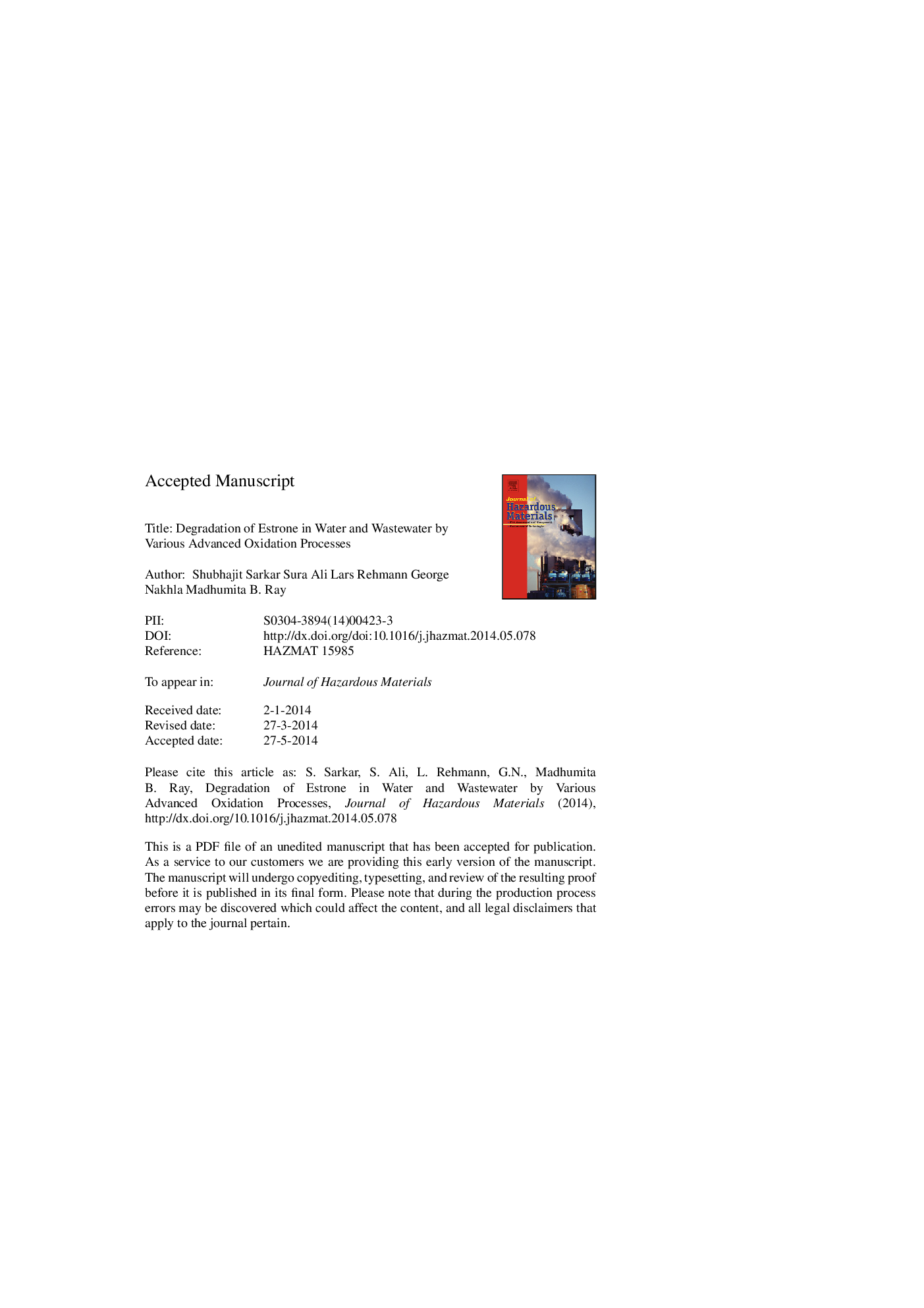| Article ID | Journal | Published Year | Pages | File Type |
|---|---|---|---|---|
| 576505 | Journal of Hazardous Materials | 2014 | 45 Pages |
Abstract
A comprehensive study was conducted to determine the relative efficacy of various advanced oxidation processes such as O3, H2O2, UV, and combinations of UV/O3, UV/H2O2 for the removal of estrone (E1) from pure water and secondary effluent. In addition to the parent compound (E1) removal, performance of the advanced oxidation processes was characterized using removal of total organic carbon (TOC), and estrogenicity of the effluent. Although E1 removal was high for all the AOPs, intermediates formed were more difficult to degrade leading to slow TOC removal. Energy calculations and cost analysis indicated that, although UV processes have low electricity cost, ozonation is the least cost option ($ 0.34/1000 gallons) when both capital and operating costs were taken into account. Ozonation also is superior to the other tested AOPs due to higher removal of TOC and estrogenicity. The rate of E1 removal decreased linearly with the background TOC in water, however, E1 degradation in the secondary effluent from a local wastewater treatment plant was not affected significantly due to the low COD values in the effluent.
Related Topics
Physical Sciences and Engineering
Chemical Engineering
Chemical Health and Safety
Authors
Shubhajit Sarkar, Sura Ali, Lars Rehmann, George Nakhla, Madhumita B. Ray,
